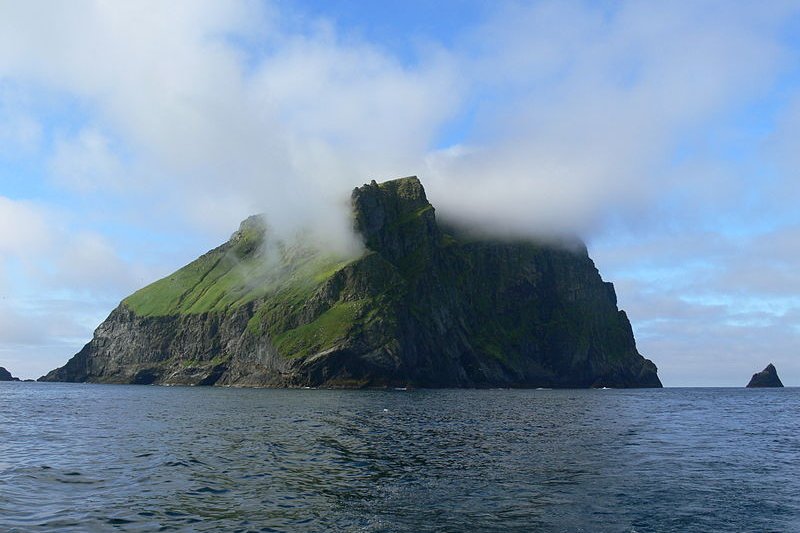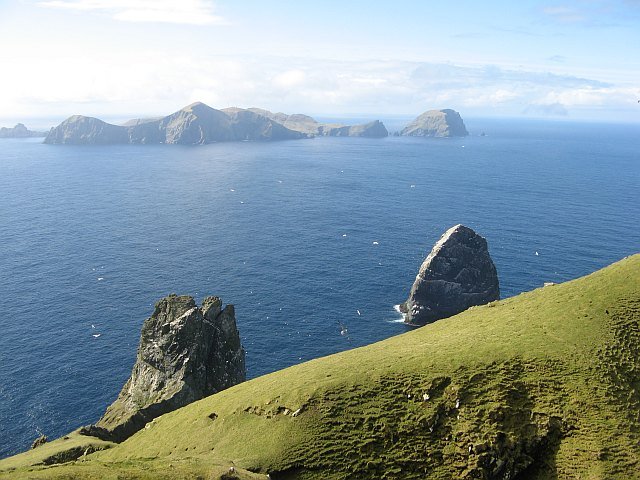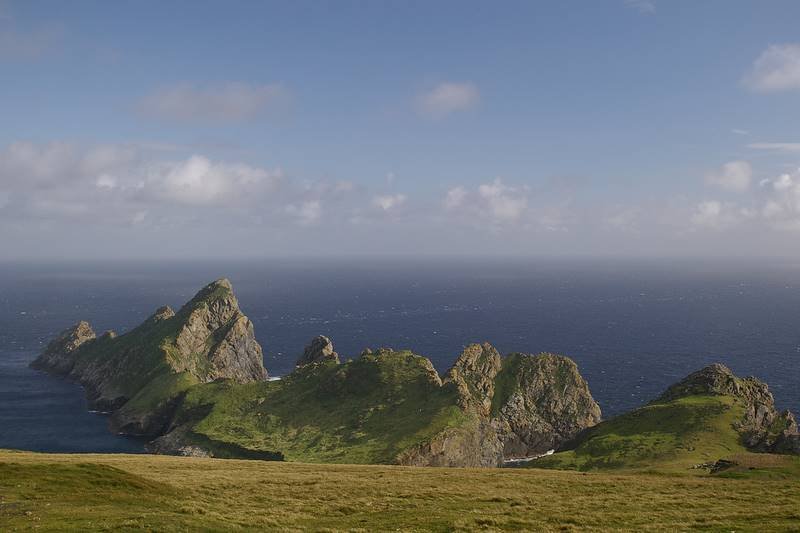 Soay, one of the islands of the St. Kilda archipelago
Soay, one of the islands of the St. Kilda archipelagoSource: https://en.wikipedia.org/wiki/File:Inselsoay.JPG
Author: Olaf1950

St. Kilda is an isolated archipelago off the coast of Scotland, in the North Atlantic Ocean. It is recognised as a World Heritage Site for both natural and cultural values. St Kilda is some of the westernmost islands of the Outer Hebrides. It comprises a number of islets which are remnants of long-extinct volcano that rose from the seabed. The biggest of these islands is Hirta, which is 670 hectares in area.
Although St. Kilda has been inhabited for the past two thousand years, its population never exceeded 180, and never above a hundred since 1851. Today, the only people who are staying on the islands are military personnel as well as scientists and conservationists.
In addition to natural landscape, St. Kilda has prehistoric ruins as well as medieval villages from the Late Middle Ages. There are for example dry stone huts, called cleit, found at Village Bay.
 Stack Lee in the St Kilda archipelago
Stack Lee in the St Kilda archipelagoSource: https://commons.wikimedia.org/wiki/File:Stack_Lee_from_above_-_geograph.org.uk_-_1440027.jpg
Author: Richard Webb

St. Kilda was inscribed as a World Heritage Site during the 10th session of the World Heritage Committee in Paris, France, on 24 - 28 November, 1986.
World Heritage Site Inscription Details
Location: N 57 49 2 W 8 34 36Inscription Year: 1986
Type: Mixed
Inscription Criteria: III, V, VII, IX, X
 Hirta, the main island of St Kilda
Hirta, the main island of St KildaSource: https://commons.wikimedia.org/wiki/File:Hiort2.jpg
Author: Gaelic Arts


Copyright © 2003-2025 Timothy Tye. All Rights Reserved.

 Go Back
Go Back